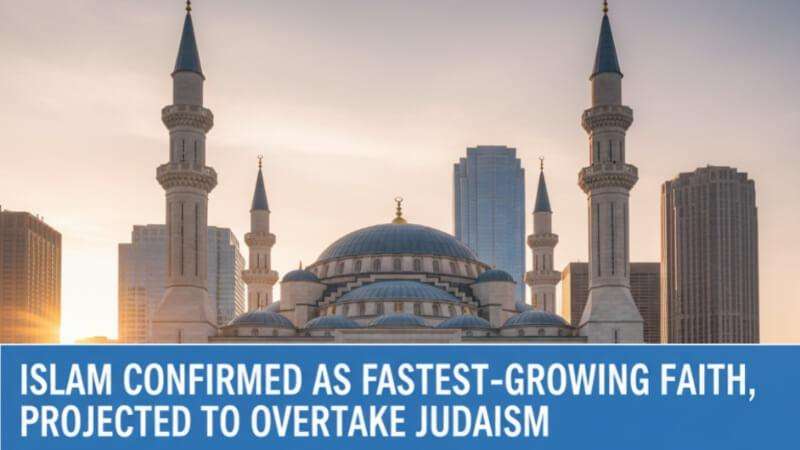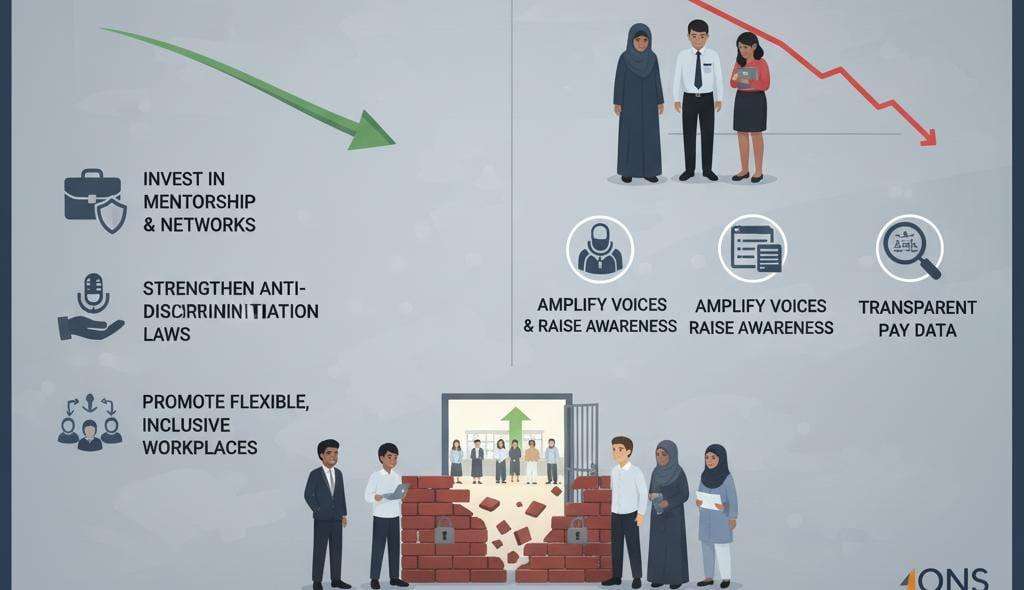Recent demographic shifts in the United States indicate a significant change in the religious landscape, with a new US Religious Census confirming Islam as the nation's fastest-growing faith. This trend is driven by several factors, including higher birth rates among Muslim Americans, continued immigration from predominantly Muslim countries, and a notable number of conversions. Projections based on current data suggest that, if these patterns continue, the Muslim population is on track to surpass the Jewish population in the coming decades, marking a notable evolution in the country's diverse religious tapestry, Daily Dazzling Dawn understands.
Official Census Data Confirms Islam’s Meteoric Rise, Set to Overtake Judaism as America’s Second-Largest Religion
The United States is witnessing a profound demographic shift, officially confirming Islam as the nation’s fastest-growing major religion. While Christianity retains its dominance, updated data shows the Muslim population is on an accelerated trajectory to become the second-largest faith group overall, dramatically reshaping the country’s religious and cultural identity.
The Scale of Growth: Statistics and Projections-According to the most recent data from the 2020 United States Religion Census and subsequent analysis by the Pew Research Center, the current American Muslim population is estimated to be approximately 4.4 to 4.5 million individuals, constituting about 1.34% of the total U.S. population. This figure positions Islam as the third-largest religion in the country, behind Christianity (approximately 62-67% of the population) and Judaism (estimated around 2.4% of the population).
However, the rapid rate of increase is set to change this ranking. Analysts project that the Muslim population will more than double its size over the coming decades, reaching an estimated 8.1 million people by 2050. Crucially, based on current trends, the Muslim population is expected to surpass the Jewish population to officially become the second-largest religious group (after Christians) in the U.S. around the year 2040.
Drivers of the Demographic Shift
This rapid expansion is powered by two main, sustained demographic factors:
* Youthful Fertility: The American Muslim community is significantly younger than other religious communities, with 26% of Muslims aged 18 to 24. This youthful demographic ensures a high rate of "natural increase" as the community enters peak childbearing years.
* Immigration: The Muslim population has been substantially boosted by the arrival of new Americans, primarily since the passage of the Immigration and Nationality Act of 1965. Currently, 42% of American Muslims are U.S.-born, but immigrants continue to drive overall growth, representing about 10% of all legal immigrants arriving in the country.
It is noted that while thousands of Americans convert to Islam annually, the overall net conversion rate is roughly neutral, meaning the primary engine for the rapid rise is generational growth and sustained immigration.
A Highly Diverse and Engaged Community-Beyond raw numbers, the American Muslim community stands out as the most ethnically diverse faith group in the nation. This diversity is reflected in its composition: roughly one-third of the community is Black, one-third is of South Asian descent, one-quarter is of Arab descent, with the remainder being from other backgrounds, including a growing Latino Muslim contingent.
The community exhibits strong engagement in professional life. Studies show that 46% of Muslims hold a college degree or higher, exceeding the 38% rate for the general public. Large numbers are engaged in high-skilled fields, with estimates suggesting that nearly 50,000 American Muslims serve as physicians, representing five percent of the total physician workforce. Furthermore, the community shows considerable entrepreneurial spirit, evidenced by the large number of Muslim-owned businesses, such as 96,000 in New York City alone.
This rapid, multifaceted growth ensures Islam will continue to hold a prominent and permanent position in the American public sphere and influence the national discourse for decades to come.








.svg)


